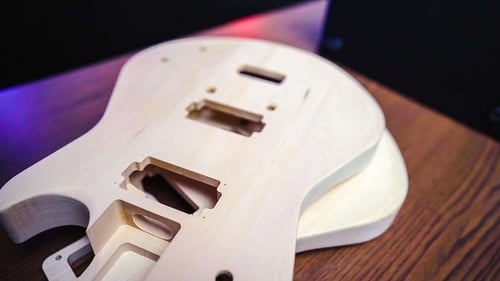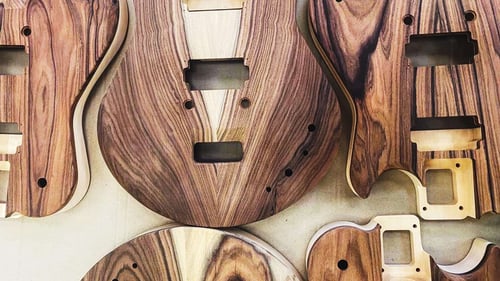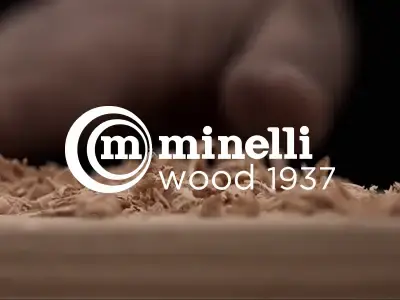The most common woods for an electric guitar neck
The most common woods for electric guitar neck are maple and mahogany.
Maple is a very dense and hard type of wood with few grains and gaps, so it produces a bright and sharp tone and a tight and sharp sound with a tendency to favour high frequencies as opposed to low frequencies. It is commonly used for the necks of Fender Telecasters and Stratocasters. Its color ranges from nearly white to an off-white cream color, sometimes with a reddish or golden hue.
 Mahogany is less dense than maple, meaning that it has more gaps and grains. Therefore, the tone is darker, deeper, and more resonant with a better sustain. It favours bass frequencies. The depth and warmth that mahogany brings to the tone is one of the reasons why it’s used in the Gibson Les Paul and other guitars, such as the PRS Custom 24. Its color is dark with reddish-brown shades.
Mahogany is less dense than maple, meaning that it has more gaps and grains. Therefore, the tone is darker, deeper, and more resonant with a better sustain. It favours bass frequencies. The depth and warmth that mahogany brings to the tone is one of the reasons why it’s used in the Gibson Les Paul and other guitars, such as the PRS Custom 24. Its color is dark with reddish-brown shades.

Besides affecting the tone and sound, the type of wood used to manufacture the neck influences the weight and appearance of the guitar.
Maple, being denser, is also heavier than mahogany. An electric guitar whose neck is made of maple is generally heavier. Some electric guitars, however, such as Fender Telecasters and Stratocasters, despite having a maple neck are pretty light, as they have thinner bodies. It means that just because an electric guitar neck is made of maple doesn’t mean the guitar will automatically be heavier.
As for the look of the guitar, maple is much lighter and more golden than mahogany, which is a darker brown. If you decide to use a natural finish, you should consider this difference.
A competent manufacturer, however, will be able to customize the electric guitar neck according to your client’s preferences, applying the finishing option they desire. It is important to consider the possibility of personalizing each electric guitar part, as customers will require it.
For most players, in fact, the electric guitar is not just an object, but it reflects their personality and attitude and must be made according to personal characteristics and requirements.
Here are some examples of electric guitar designs:
Only an expert manufacturer has the competency and tools to create such difficult designs while maintaining the highest standards of durability, resistance, and functionality.
The Minelli Group and subsidiary Minelli USA have manufactured wooden components for the OEM market for more than 80 years.
We have production plants in both Europe and the U.S., where we can produce wooden guitars of the highest quality, customizing them according to your and your clients’ needs.
We select the best woods for electric guitar necks and bodies, collecting them respecting all the standards for environmental and forestry protection (our woods are FSC and PEFC certified).
If you need more information, contact us right now!





 Selecting the best wood for an electric guitar neck is very important, as it greatly influences the tone of the guitar. Wood density and stiffness affect the way the neck translates string vibrations to the body with a great effect on the resulting sound.
Selecting the best wood for an electric guitar neck is very important, as it greatly influences the tone of the guitar. Wood density and stiffness affect the way the neck translates string vibrations to the body with a great effect on the resulting sound.


